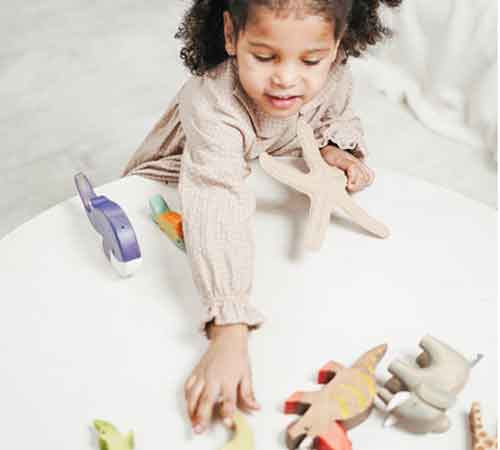As parents, we strive to teach our children essential life skills to help them navigate the world confidently and kindly. One fundamental skill that plays a significant role in building relationships is greeting others.
In this heartwarming guide, we will explore a step-by-step approach to teaching your child greetings, ensuring they develop the skills to connect with others in a friendly and meaningful way.
Step 1: Lead by Example
Children learn best by observing and imitating their parents. Model cheerful greetings in daily interactions with family members, friends, and strangers.
Let your child see you offer warm smiles, handshakes, hugs, or verbal greetings like “Hello” or “Good morning”.
Your actions will leave a lasting impression and set the foundation for your child’s understanding of greetings.
Step 2: Start At Home
Encourage your child to greet family members at home.
Create a welcoming environment where everyone takes a moment to acknowledge and greet each other when they come together or start their day.
Reinforce the idea that greetings are a way to show love, respect, and appreciation for one another.
Step 3: Teach Basic Greetings
Introduce your child to basic greetings such as “Hello,” “Goodbye,” “Good morning,” and “Goodnight”.
Explain the appropriate context for each greeting, such as using “Good morning” when starting the day or “Goodbye” when parting ways.
Practice these greetings and encourage your child to use them in different situations.
Step 4: Practice Eye Contact Aand A Smile
Teach your child the importance of eye contact and smiling when greeting someone.
Explain that these actions show genuine interest, warmth, and respect.
Practice maintaining eye contact and smiling during role-playing scenarios, gradually building their confidence and comfort.
Step 5: Use Polite Body Language
Body language plays a significant role in effective greetings.
Teach your child to stand or sit up straight, face the person they are greeting, and offer a friendly demeanour.
Encourage them to use a calm and clear voice, showing confidence and respect.
Step 6: Encourage Handshakes And High-Fives
Introduce your child to appropriate physical greetings, such as handshakes and high-fives.
Explain when offering these greetings, such as meeting new people or celebrating achievements, is reasonable.
Teach them to extend their hand confidently, maintain a firm but gentle grip, and respect personal boundaries.
Step 7: Cultural Sensitivity
Emphasise the importance of cultural sensitivity in greetings.
Teach your child to be aware of cultural practices and customs when greeting individuals from diverse backgrounds. Encourage them to adapt their greetings accordingly, showing respect and appreciation for cultural differences.
Step 8: Role-Play And Reinforce
Engage in role-playing activities to help your child practice greetings in various scenarios.
Pretend to be different people, such as a teacher, neighbour, or friend, and have your child initiate greetings.
Offer positive reinforcement, praise their efforts, and provide gentle guidance to improve their greetings.
Step 9: Expand Greetings Beyond Family
Encourage your child to greet people beyond the immediate family circle.
Whether it’s their teachers, classmates, neighbours, or community members, guide them in extending greetings to create connections and build relationships.
Help them understand that a simple hello can brighten someone’s day and foster a sense of belonging.
Step 10: Celebrate Progress
Celebrate your child’s progress and efforts in learning greetings.
Acknowledge their growth, confidence, and willingness to engage with others.
Praise their big and small achievements, and let them know how proud you are of their development in this critical social skill.
Step 11: Practice Empathy And Active Listening
Teach your child the value of empathy and active listening in greetings.
Encourage them to listen to the other person’s response and show genuine interest in their well-being.
Remind them to ask questions, listen attentively, and respond with kindness and understanding.
Step 12: Expand Cultural Horizons
Teach your child to greet in different languages and cultures.
Explore books, videos, or online resources that showcase diverse greetings worldwide.
This broadens their cultural awareness, helps them appreciate the richness of global traditions, and fosters a sense of inclusivity.
Step 13: Reinforce Consistency
Consistency is vital when teaching any skill, including teaching your child how to great.
Continually reinforce the importance of greetings in your child’s daily life. Remind them to greet others with warmth and respect, even in casual settings.
Consistency helps solidify the habit of greetings and ensures they become second nature to your child.
Step 14: Encourage Respectful Responses
In addition to teaching greetings, emphasise the importance of responding respectfully when someone greets them.
Teach your child to greet by showing them how to reciprocate greetings with equal warmth and kindness.
Also Read: 7 Ways To Take Your Kids Around The World Without Travelling
This reciprocity strengthens connections and encourages positive social interactions.
Step 15: Correct Mistakes With Patience And Guidance
As your child learns greetings, they may make mistakes or need to remember to greet someone occasionally.
Instead of scolding or reprimanding, correct their behaviour with patience and guidance. Remind them of the importance of greetings and provide gentle reminders when needed.
Encourage them to learn from their mistakes and continue practising.
By following this step-by-step guide, you can instill in them the importance of respect, empathy, and connection.
Find more resources on parenting here.




